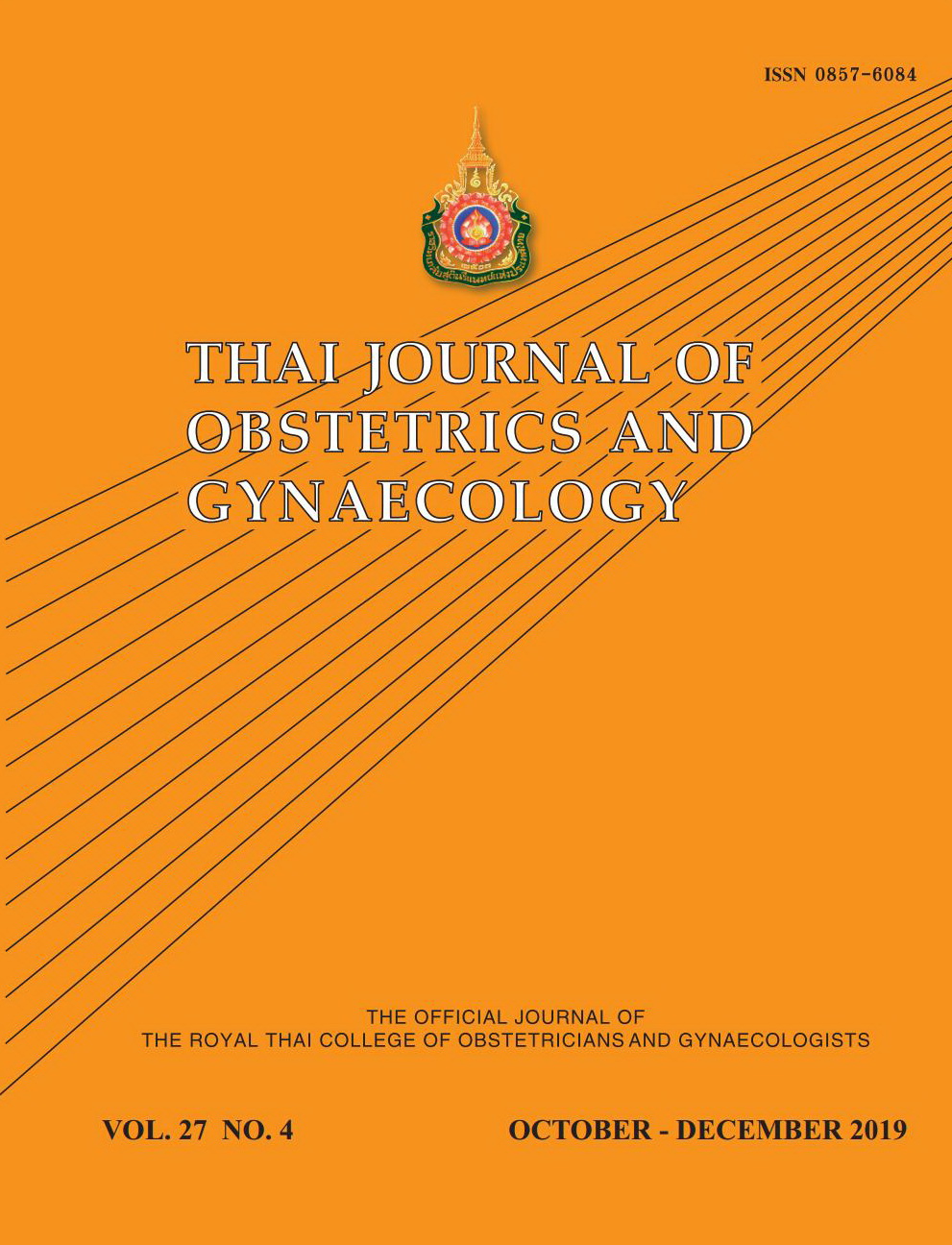The Swede Score Colposcopic Evaluation in Prediction of High-Grade Lesions in Human Immunodeficiency Virus-Infected Patients with Abnormal Cervical Cytology
Main Article Content
Abstract
Objectives: To evaluate the performance of the Swede score colposcopic scoring system at the different cut-off scores to predict high-grade lesions (HGL) in human immunodeficiency virus (HIV)-infected patient with abnormal cervical cytology.
Materials and Methods: A total of 80 HIV-infected patients undergoing colposcopic evaluation at Chonburi hospital, Thailand, due to their abnormal cervical cytological screening results, were included. All participants were evaluated with colposcopy and the findings were scored according to the Swede score system. Colposcopic directed cervical biopsy was performed in all cases. Then the final pathological diagnosis was compared with the recorded score. The performances of the Swede score for the prediction of HGL was determined by estimating the sensitivity, specificity, positive and negative predictive values of each cut-off point of total Swede score.
Results: The prevalence of HGL was 23.8%. All cases of HGL had a Swede score of 4 or above; therefore, sensitivity and negative predictive value for HGL at the cut-off score of 4 was 100%, and 100%, respectively. The maximum positive predictive value was only 47.8% at the cut-off score of 7 with the specificity of 80.3%. The specificity values at the cut-off scores of 8, 9, 10 were 83.6%, 88.5%, and 95.1%, respectively.
Conclusion: Swede Score was a good colposcopic scoring system which could be used as a screening tool to accurately exclude HGL in HIV-infected patients with abnormal cervical cytology when the total score was below 4. The specificity in HIV-infected patients was significantly lower than of that in non-HIV-infected patients; therefore, it required pathologic confirmation before treatment.
Article Details
References
2. Vesco KK, Whitlock EP, Eder M, Lin J, Burda BU, Senger CA, et al. Screening for cervical cancer: a systematic evidence review for the U.S. Preventive Services Task Force. Rockville, MD: Agency for Healthcare Research and Quality; 2011.
3. Etherington IJ, Luesley DM, Shafi MI, Dunn J, Hiller L, Jordan JA. Observer variability among colposcopists from the West Midlands region. Br J Obstet Gynaecol 1997;104:1380–4.
4. Strander B, Ellström AA, Franzén S, Milsom I, Rådberg T. The performance of a new scoring system for colposcopy in detecting high-grade dysplasia in the uterine cervix. Acta Obstet Gynecol Scand 2005;84:1013-7.
5. Bowring J, Strander B, Young M, Evans H, Walker P. The swede score: evaluation of a scoring system designed to improve the predictive value of colposcopy. J Low Genit Tract Dis 2010;14:301–5.
6. Kärrberg C, Ryd W, Strander B, Brännström M, Rådberg T. Histological diagnosis and evaluation of the Swede score colposcopic system in a large cohort of pregnant women with atypical cervical cytology or cervical malignancy signs. Acta Obstet Gynecol Scand 2012;91:952-8.
7. Chalermchockcharoenkit A, Chayachinda C, Thamkhantho M, Komoltri C. Prevalence and cumulative incidence of abnormal cervical cytology among HIV-infected Thai women: a 5.5-year retrospective cohort study. BMC Infect Dis 2011;11:1-7.
8. Ellerbrock TV, Chiasson MA, Bush TJ, Sun XW, Sawo D, Brudney K, et al. Incidence of cervical squamous intraepithelial neoplasia in HIV infected women. JAMA 2000;283:1031-7.
9. Hawes SE, Critchlow CW, Faye Niang MA, Diouf MB, Diop A, Touré P, et al. Increased risk of high-grade cervical squamous intraepithelial lesions and invasive cervical cancer among African women with human immunodeficiency virus type 1 and 2 infections. J Infect Dis 2003;188:555-63.
10. Maiman M, Fruchter RG, Sedlis A, Feldman J, Chen P, Burk RD, et al. Prevalence, risk factors, and accuracy of cytologic screening for cervical intraepithelial neoplasia in women with the human immunodeficiency virus. Gynecol Oncol 1998;68:233–9.
11. Lewis DA, Chirwa TF, Msimang VM, Radebe FM, Kamb ML, Firnhaber CS. Urethritis/cervicitis pathogen prevalence and associated risk factors among asymptomatic HIV-infected patients in South Africa. Sex Transm Dis 2012;39:531–6.
12. Davis-Dao CA, Cremer M, Felix J, Cortessis VK. Effect of cervicitis on visual inspection with acetic acid. J Low Genit Tract Dis 2008;12:282–6.

